How to deal with a spider mite on a rose?
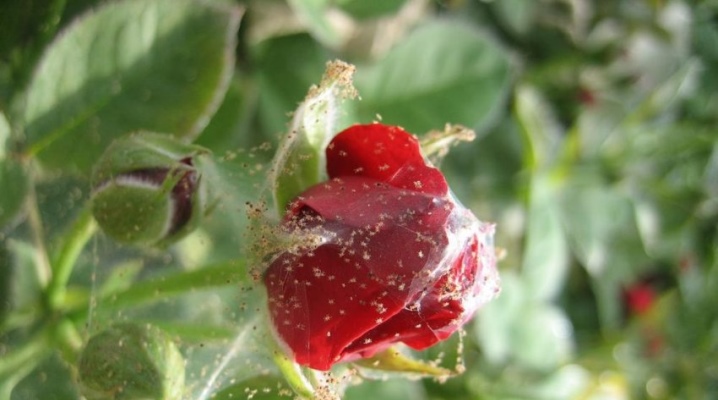
The appearance of a spider mite on a rose always raises a lot of questions among flower growers: how to treat the plants, how to get rid of the pest with the help of drugs and folk remedies? It is impossible to ignore the fact of the defeat of the bushes - they will simply die. It is worth talking in more detail about how to properly deal with spider mites at home and in the garden.
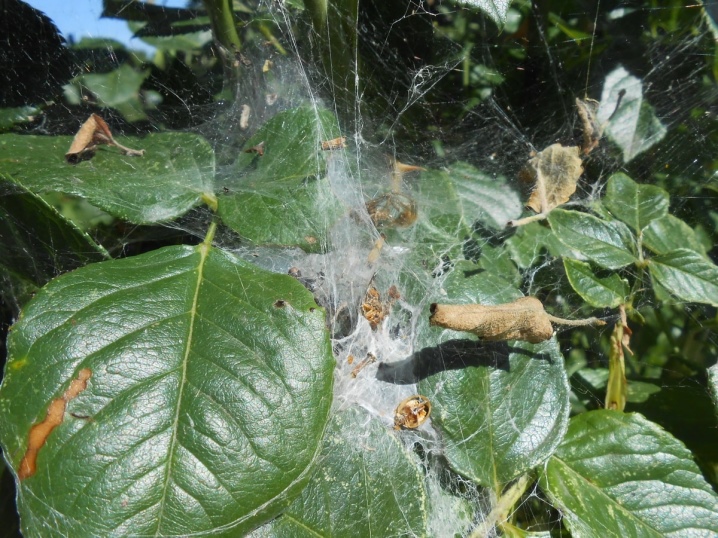
Description of the pest
A spider mite on a rose grows on both climbing and bush species. This pest doesn't look too dangerous. Its microscopic size allows it to remain unnoticed for quite a long time. The body of females has a maximum length of 0.6 mm; males rarely grow more than 0.4 mm. The shape of the body of the spider mite is oval, with a characteristic bulge in the back.
This representative of the animal world reproduces, laying eggs, from which larvae with a transparent body then appear. Adult ticks are colored quite brightly, in orange-red tones. Due to their small size, these arachnids are almost impossible to distinguish on plants at the initial stage of rose infestation.
Their presence is detected after the pest begins to entangle the bushes and lashes with its net.
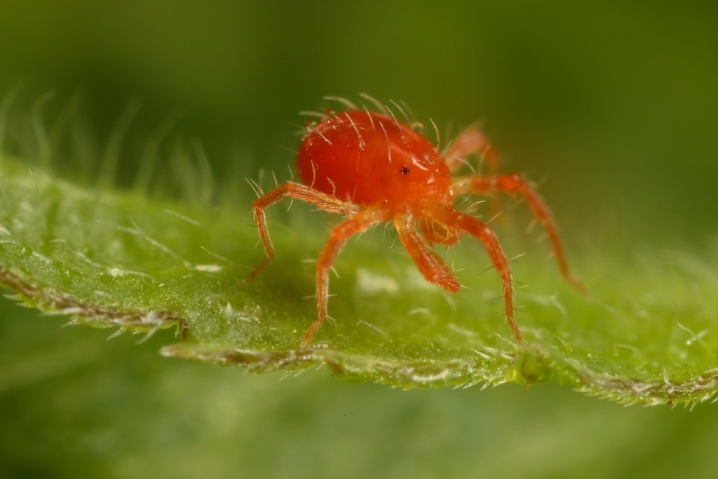
Spider mites - polyphages, choose more than 200 plant species as their habitat. This makes it especially dangerous to appear in the garden, since the infection can spread to different crops - from roses to grapes. In nature, the mite Phytoseiulus persimilis is its direct enemy.
The pest's lifestyle involves the formation of colonies. Several hundred individuals live together at the same time, hibernating in fallen leaves under trees and shrubs. In its habitat in the spring-summer period, the spider mite forms the thinnest network that coils into dense cocoons. A colony lives under it, located on the back of the plant's leaf plates. The appearance of a cobweb can be called the main symptom of a rose infection.
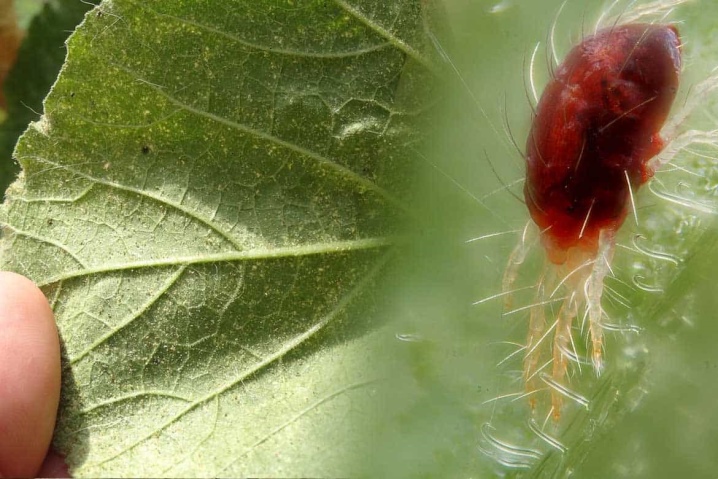
Signs and causes of appearance
The defeat of garden and domestic plants by a spider mite always occurs unexpectedly. Most often, the pest appears on the branches in the spring, when it begins to actively expand its habitat. Getting to the surface from the wintering shelter, it is easily carried by the wind over considerable distances. Usually, the plants planted along the perimeter of the site are the first to suffer from the new neighbor, and from here the tick is already spreading throughout the garden. The growth in the number of the colony occurs very quickly, the voracious larvae reach maturity in just 7 days, and then leave offspring.
The appearance of spider mites on roses does not necessarily lead to serious consequences. The main risk group includes plants that do not receive proper care. The lack of regular pruning, feeding, protection leads to a weakening of the shrub's immunity. On such plants, spider mites and other parasites feel quite comfortable.
In a house or apartment, roses are infected mainly by transferring from new seedlings. In a warm, dry microclimate, arachnids begin to actively reproduce.
Lack of quarantine, preventive treatment when buying new roses leads to the spread of ticks.
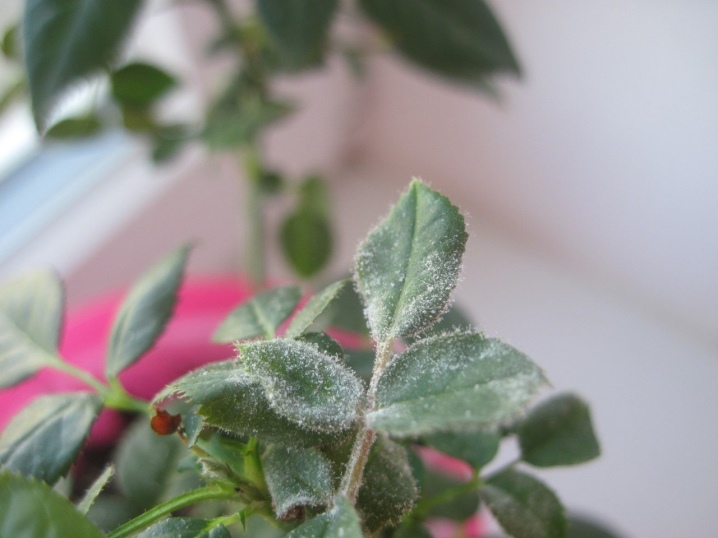
A sign that the plants are sick is a discoloration of the leaf plate. It turns yellow, dries up, falls off.It is for this reason that gardeners often begin treating plants for fungal diseases instead of fighting spider mites - the symptoms are similar.
And also when examining a rose, you can identify other signs of damage.
- Formation of a thin white web. It covers the lower surface of the leaf, can entangle the stem, buds, and infect flowers.
- The appearance of points. They are yellow or whitish in color, formed in places where the pest sticks to the leaf in the process of absorbing its juices.
- Forming a border, curling the tip of the sheet. Unfortunately, these signs are common to other plant diseases as well.
- Detection of microscopic pests. The body of a spider mite resembles a grain of sand. But there will be many such moving elements in the habitat. With intense damage, it is quite difficult not to notice the pests.
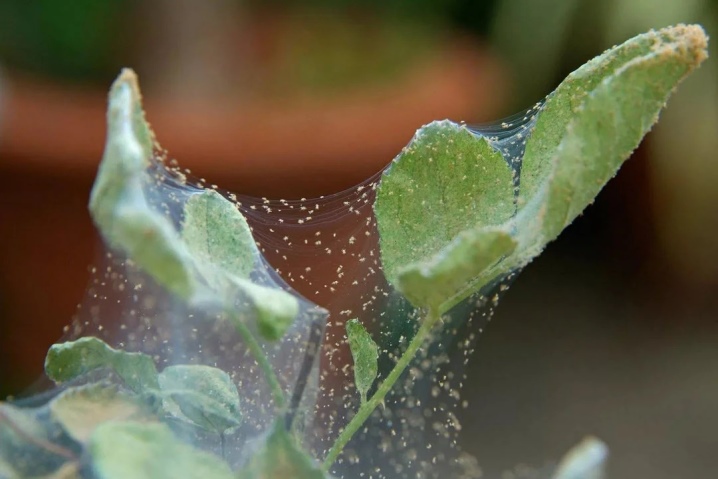
After making sure that spider mites attacked the roses in the garden or on the windowsill in the home greenhouse, you can proceed to decisive measures to combat them.
Control measures
You can fight spider mites quite effectively both in the garden and at home. Houseplants are less likely to be affected by this parasite. And yet, at home, roses can suffer from a pest if it gets into a room with a bouquet, contaminated soil or downwind through open windows. Getting rid of an intruder in a confined space is quite difficult - it multiplies quickly, lays eggs in the ground.
The most effective solution to remove the pest from the leaf plate is to thoroughly wipe the stem and leaves with a 96% solution of medical alcohol. This measure can also be used for preventive purposes, when buying a new plant. You can also spray the rose with flea and tick drops sold at the pet store. Among chemical solutions for home use, biological preparations such as Fitoverm or its analogues are more suitable.
Chemicals
When growing roses in the open field against spider mites, you can use means and methods of a wider spectrum of action. Insecticidal preparations, both chemical and biological, help to save bushes and whips from the invasion of pests. In this case, processing must be done in strict accordance with the manufacturer's instructions. As a rule, treatment is carried out twice to eliminate all risks.
A review of popular drugs will help you choose the best remedy that can rid garden roses of spider mites.
-
"Fufanon". The agent based on the chemical insecticide malathion has a contact effect, has additional repelling properties for harmful insects. The drug is not highly toxic, but significantly reduces its effectiveness when used repeatedly. It is not recommended to use it for protection for 2 years in a row.
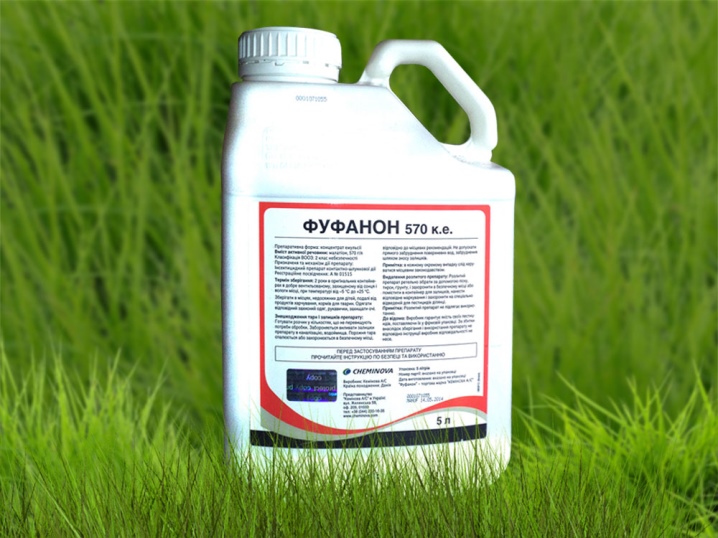
- "Bitoxibacillin". Biological insecticide, non-toxic to humans and animals. It enters the intestines of arachnids in the process of eating greens by them, paralyzes them, but does not have an ovicidal effect. The solution is recommended to be used at a temperature not higher than +22 degrees, it does not harm beneficial insects, it acts quickly.
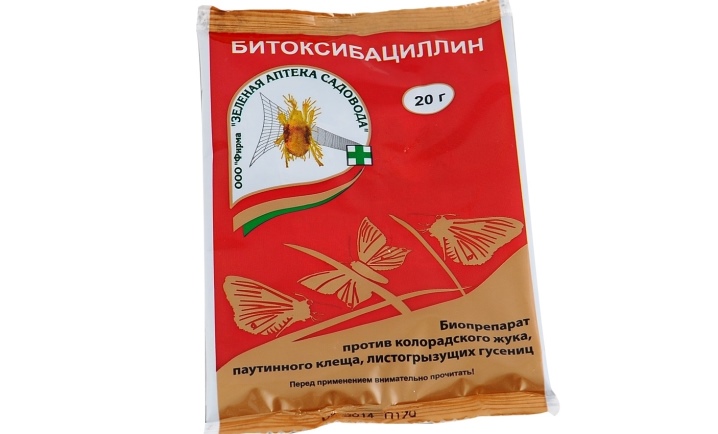
- Demitan. An insectoacaricide capable of destroying a spider mite at any stage of its development. The drug is quite toxic, but safe for bees and other beneficial insects. The protective effect provided by it lasts for 60 days. When handling, gloves and a respirator should be used.

- "Skelta". Selective drug that perfectly copes with the defeat of roses by spider mites. Suitable for the destruction of the entire population, including at the stage of eggs, is not washed off with water from leaves and shoots. Plants are processed twice, with a break of 7 days. For people and pets, the drug is non-toxic.
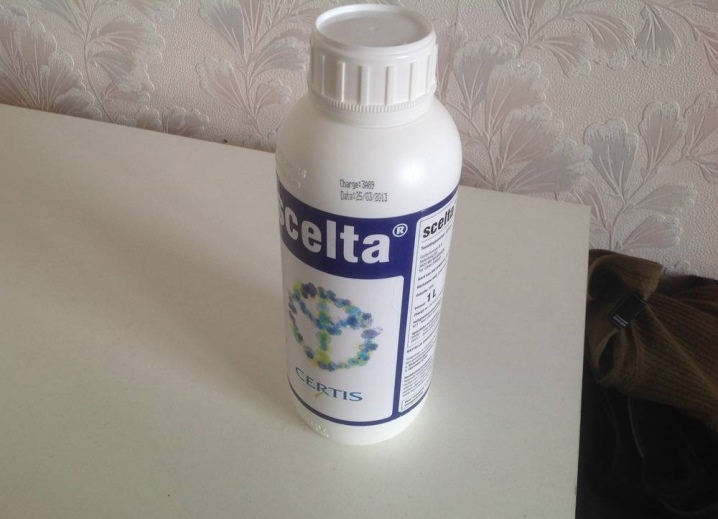
- Fitoverm. The chemical insectoacaricide ensures the destruction of the pest by both contact and intestinal routes.It is a versatile product that can be used in greenhouses and home greenhouses, as well as outdoors. A high degree of plant protection is achieved by repeated treatment of the bushes at intervals of 7-8 days.
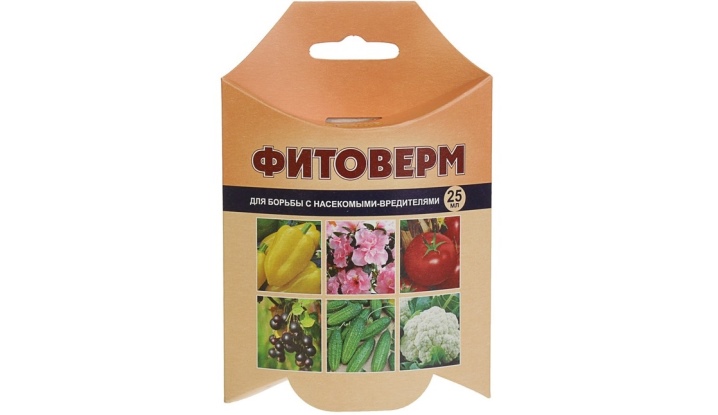
When choosing a suitable insecticide that can cure roses from spider mites, you should pay attention to the type of its action.
Watering under the root of the plant can be an ovicidal preparation that destroys egg clutches. It is possible to spray the leaves and shoots themselves with compositions of a wide spectrum of action. This will be enough to eliminate the threat at an early stage. For soil treatment for preventive purposes, it is recommended to use the drug "Aktara", which successfully destroys many types of dangerous pests.

Folk remedies
It is quite possible to process roses that have been infected with a spider mite with folk remedies. Their advantages include low toxicity, which eliminates the danger to humans, animals and birds. During the pollination period, they do not harm insects, they allow you to maintain the natural balance of beneficial microorganisms in the garden.
There are several methods and means for processing that have proven themselves best in the fight against spider mites.
-
Garlic infusion. It is prepared from 0.5 kg of crushed garlic and 3 liters of water. The infusion is kept for 7 days under a lid in a warm and dark place. After that, the solution is filtered, combined with 100 ml of liquid soap, and then diluted at the rate of 80 ml per 10 l of water. The agent is sprayed onto the surface of the leaves, if necessary, the treatment is repeated after 10-14 days.

- Onion broth or infusion. It is prepared from husks, 100 g is enough for 5 liters of water. You can boil the resulting mass or simply use a liquid with a temperature above 70 degrees. The resulting solution is infused for 5 days, and then filtered. You can use such an infusion without diluting, simply filling it into a spray bottle.
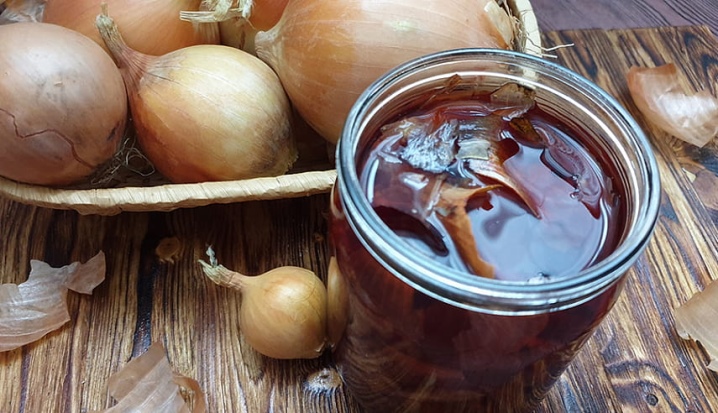
- Infusion of alder leaves. This natural remedy for spider mites is prepared from freshly cut raw materials, you will need about 2 kg. Knead the leaves, pour 10 liters of warm water, leave for 2-3 days. After this period, the mixture is heated to a boil, kept on low heat for about half an hour, then cooled and filtered. It is better to spray rose bushes with a solution in a mixture with liquid soap, the remnants of the product can be stored in a dark place for later use.

- Tobacco broth. To make this remedy for a spider mite, it is enough to take 300 g of leaves, scald them with boiling water in a volume of 5 liters, and then insist for 24-36 hours. After the expiration of the prescribed period, the solution is again put on fire, boiled for 2 hours over low heat. The cooled broth is filtered, mixed with 100 ml of liquid soap, whipped into a foam for better adhesion. You can spill the soil under the roses with the resulting product, and also apply it to the leaves and shoots of plants.
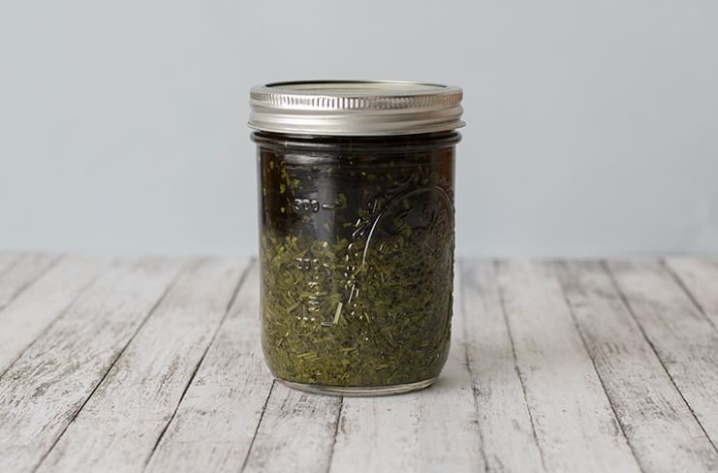
It is worth considering that the use of folk recipes does not imply complete disposal of insect pests.
Most of the self-prepared infusions and decoctions are able to scare off the spider mite, destroy its larvae and adults. Such processing methods do not work on eggs laid in the ground or on leaves, which means that the risk of re-infection remains.
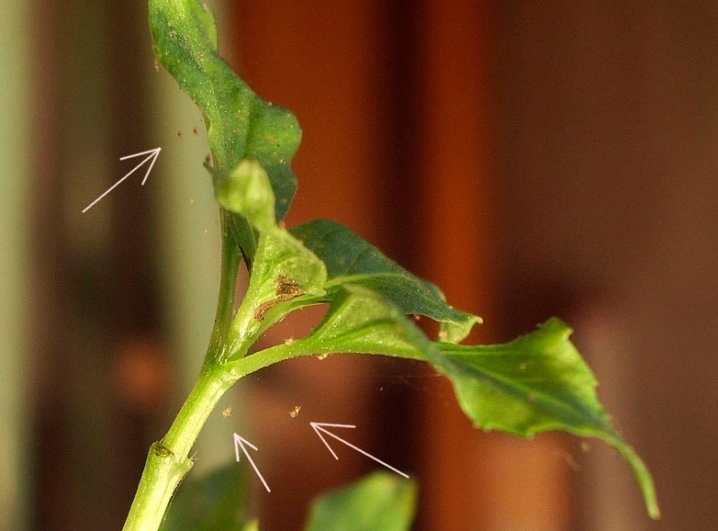
Prophylaxis
Timely preventive measures help to avoid contamination of the garden or home collection of plants with a spider mite.
Here are the most popular ways to protect yourself.
- Selection of varieties resistant to pest infestation. These are now withdrawn, they can be found on sale. Resistant varieties include the rose "Gloria Day", "Golden Showers".
- Thorough inspection of new plants and periodic inspection of those already growing. If warning signs are found, it is worth performing a preventive chemical treatment. And you can also rinse the surface of the stems, leaves with infusion of tobacco, hot pepper or garlic.Particular attention should be paid to the underside of the rose leaves, as well as the appearance of discolored dots on their outer surface.
- Disinfection of the soil during transplantation. Both the nutrient substrate for the pots and the open ground on the site need pest control. To destroy spider mite eggs, boiling water or special preparations will help.
- Regular cleaning of fallen leaves. It is in it that the pest prefers to winter, lay eggs. The collected waste must be incinerated. It is strictly forbidden to simply rake it into heaps, especially if there are already signs of the appearance of parasites on the site.
- Maintaining an optimal microclimate. When growing in greenhouses and greenhouses, you need to try to ensure that the air humidity is at least 85% and the temperature is not higher than +25 degrees. In such conditions, the spider mite does not develop.
- Thinning of plantings. It is important to avoid thickening, to exclude close contact of flower bushes and lashes with other plants. The roses themselves are recommended to be formed regularly by pruning overgrowing shoots.
- Regular disinfection of garden tools. When infecting other plantings, it can serve as a way of transferring mite eggs to roses.
- Disinfection of greenhouses, pots, glass. It is carried out with special solutions or other means. In the garden, sulfur or smoke bombs are used for these purposes. At home, an alcohol solution, boric acid or ordinary liquid soap will be enough. They are used to treat window and balcony frames, window sills, and other furnishings in the immediate vicinity of plants.
Following these recommendations, it is possible to prevent infection, but even the most careful observance of preventive measures does not give a 100% guarantee. If the spider mite has already appeared on the roses, only a full-fledged treatment of diseased plants will help.
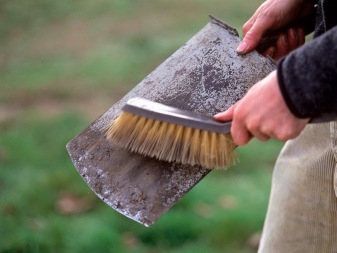
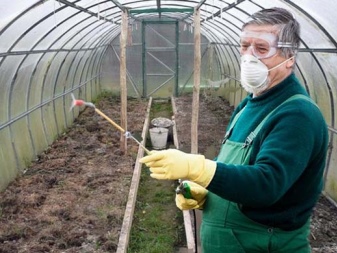
How to get rid of a spider mite, see below.













The comment was sent successfully.